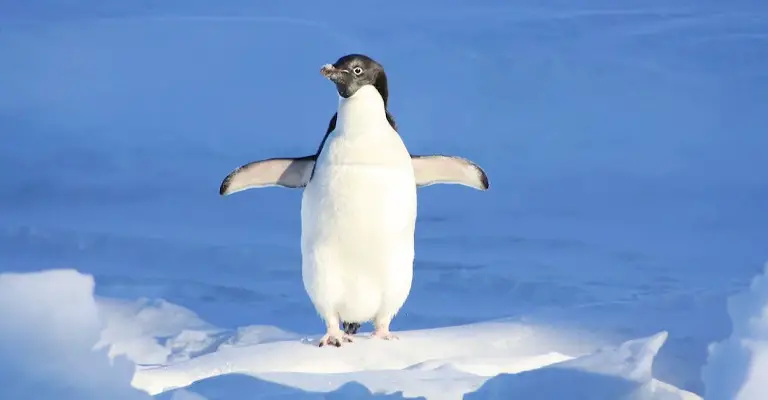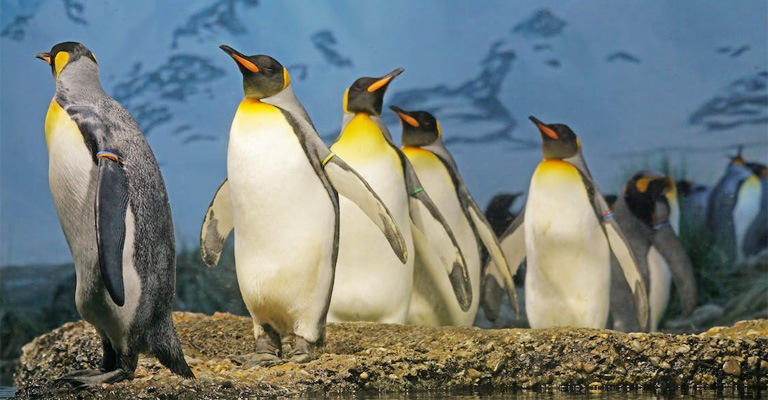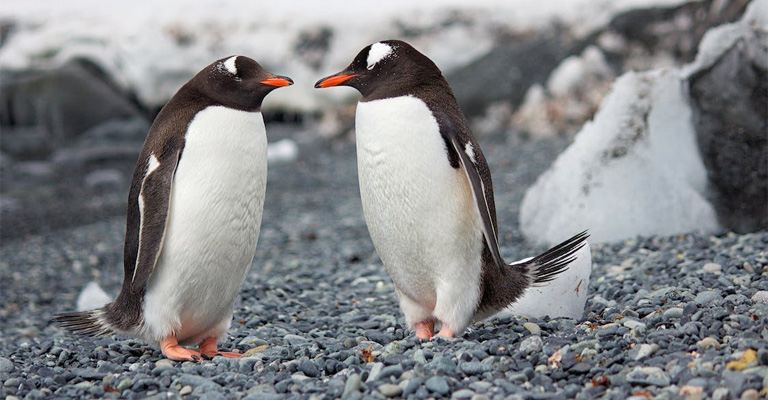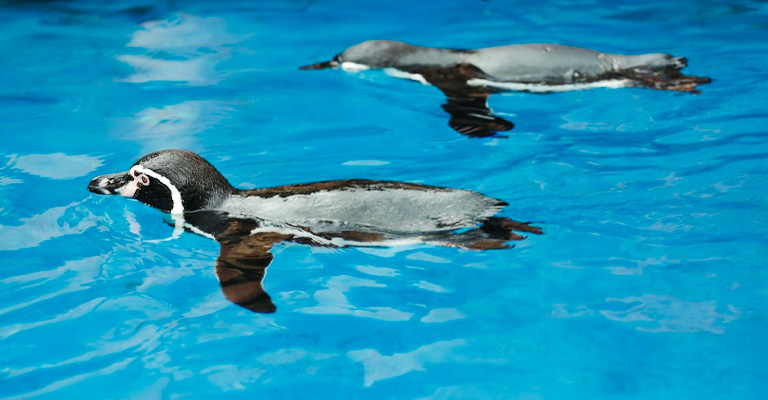In the vast world of ornithology, penguins hold a unique spot. They’re impressively adapted to aquatic life, and yet, they’re undeniably birds. It’s an interesting paradox that prompts many to ask – why are penguins considered birds?
Firstly, penguins share several key characteristics with other bird species. They lay eggs, have feathers and wings (even if used differently), and their skeletal structure closely aligns with avian anatomy.
Despite their proficiency in water, penguins still maintain these fundamental traits inherent to the bird family.
Moreover, it’s worth noting that all birds aren’t destined for flight. Flightless birds aren’t unheard of; ostriches and kiwis join penguins in this category.
But their inability to fly doesn’t negate their bird status – instead it highlights nature’s splendid adaptability and diversity within the avian realm.

Characteristics of Birds
Birds are a diverse group of animals that share several key characteristics that distinguish them from other animals. These characteristics include:
Feathers
Feathers are one of the defining features of birds. They are unique to birds and are specialized structures that provide various functions.
Feathers help birds regulate their body temperature by providing insulation, keeping them warm in colder environments, and preventing overheating in warmer conditions. Feathers also enable flight, allowing birds to move through the air with precision and efficiency.
Beaks
Another characteristic feature of birds is their beaks, also known as bills. Beaks come in a wide variety of shapes and sizes, reflecting the different feeding habits and adaptations of various bird species.
Beaks serve multiple purposes, including capturing and manipulating food, grooming feathers, building nests, and even producing sounds for communication.
Wings and Flight
While not all bird species are capable of sustained flight, wings are a common characteristic of birds. Wings are modified forelimbs that have evolved for flight.
They are usually covered in feathers and are used for propulsion and maneuvering through the air. Even flightless birds, such as ostriches and penguins, have wings that have adapted for other purposes, such as balance or swimming.
Endothermy

Birds are warm-blooded animals, which means they can regulate their body temperature independently of their environment. This ability is essential for their active lifestyle and allows them to inhabit a wide range of environments, including cold regions.
Maintaining a constant body temperature enables birds to be highly active and efficient in their daily activities.
Oviparity
Also, birds reproduce by laying eggs. The eggs are usually hard-shelled and provide a protective environment for the development of the embryo.
The parents provide care for the eggs, such as incubation and protection until the chicks hatch. This reproductive strategy allows birds to colonize diverse habitats and adapt to various ecological niches.
Adaptations for Flight
Flight has been a significant driving force in the evolution of birds, leading to various adaptations that enhance their aerial abilities. These adaptations include lightweight bones, powerful flight muscles, efficient respiratory systems, and streamlined body shapes.
Birds have also developed specialized feathers, such as contour feathers for flight and down feathers for insulation.
High Metabolic Rate
Birds have a high metabolic rate, which supports their energy-demanding activities such as flying, foraging, and maintaining body temperature.
Their efficient respiratory system, including air sacs and lungs, allows them to extract oxygen efficiently and provide oxygen-rich blood to their highly active tissues.
Why Are Penguins Birds Not Fish?
The question Is a penguin a bird? Despite their aquatic lifestyle and ability to swim, it’s crucial to understand that penguins are birds . In fact, they’re classified as birds due to their distinct biological characteristics.
They belong to the Spheniscidae family, making them flightless seabirds primarily found in the Southern Hemisphere.
What often causes confusion is the fact that penguins have wings adapted for swimming rather than flying. This adaptation may have led people to categorize them as fish in the past erroneously.
However, these wings or flippers contribute to their unique classification among birds.
Penguins also showcase a distinctive black and white coloring which serves as camouflage when they’re under water. It’s worth noting that these birds spend up to 75% of their lives in water, hunting prey such as fish, krill, and squid.
Nevertheless, penguins exhibit typical bird behaviors like breeding in colonies and forming monogamous pairs. Their parenting behavior is another distinguishing feature – they take turns incubating eggs and raising chicks much like many other bird species.
Although there might be certain similarities between penguins and fish due to their marine habitat and lifestyle, it’s important not to confuse this with actual biological classification.
The classification of penguins as birds stems from their evolutionary history along with anatomical features distinct from those of fishes.
Evolutionary History of Penguins

Birds are thought to have evolved from small, feathered dinosaurs over 150 million years ago. Over time, birds developed a number of unique adaptations, including the ability to fly, which allowed them to occupy a wide range of habitats and niches.
Today, there are over 10,000 species of birds, ranging from tiny hummingbirds to massive ostriches.
Penguins belong to the scientific order Sphenisciformes, which is comprised of flightless birds that are specialized for life in the water. The Sphenisciformes order also includes a number of extinct species that lived during the Paleocene and Eocene epochs.
They are thought to have evolved from flying ancestors that lived in the Southern Hemisphere. Over time, these birds gradually lost the ability to fly as they adapted to life in the water.
This transition was driven by several factors, including the need to escape predators, the availability of food in the water, and the challenge of finding mates and nesting sites on land.
As penguins evolved, they developed unique adaptations that allowed them to swim efficiently through the water and feed on aquatic prey.
These adaptations include a streamlined body shape, flippers instead of wings, and a layer of dense feathers and blubber that provide insulation and buoyancy.
Today, penguins are one of the most successful groups of flightless birds, and they are found in a range of aquatic habitats, from the cold waters of the Antarctic to the warm, tropical waters of the Galapagos Islands. Despite their flightless status, penguins are still considered birds because they possess all.
Adaptations of Penguins for Aquatic Life

Explanation of how penguins have developed unique adaptations for life in the water Penguins have developed a number of unique adaptations that allow them to live and thrive in the water.
Some of the facts on the most important adaptations of penguins include:
Streamlined Body Shape
Penguins have a sleek, hydrodynamic body shape that minimizes drag and increases swimming efficiency. This allows them to cover large distances in search of food and mates, and to escape predators.
Flippers Instead of Wings
Penguins have flippers instead of wings that they use to swim through the water. The flippers are large and paddle-shaped and are covered in dense, waterproof feathers that reduce drag.
Dense Feathers and a Layer of Blubber
Penguins have a dense layer of feathers that insulate their bodies and provide buoyancy. They also have a layer of blubber beneath the skin that helps regulate their body temperature and provides an additional layer of insulation.
Unique Beak Structure
Penguins have a unique beak structure that allows them to catch and hold small prey in the water. Their beaks are pointed and sharp and are adapted for slicing through the water and grasping small fish, krill, and squid.
These adaptations demonstrate the remarkable adaptability of penguins and their ability to thrive in a challenging and constantly changing environment.
Despite their flightless status, penguins are still considered birds because they possess all of the defining characteristics of birds, and their evolutionary history ties them closely to other bird species.
Penguin Characteristics and Adaptations
| Characteristic/Adaptation | Explanation |
| Feathers | Penguins have a dense layer of waterproof feathers that insulate them from the cold and help them swim through the water. |
| Beaks | Penguins have strong, pointed beaks that they use to catch fish and other seafood. |
| Ability to lay eggs | Penguins lay eggs, just like other bird species. |
| Evolution from flying ancestors | Penguins evolved from flying ancestors and are now flightless birds. |
| Aquatic adaptations | Penguins have developed adaptations for life in the water, including waterproof feathers, webbed feet, and a streamlined body shape. |
| Unique behaviors | Penguins have unique behaviors, such as huddling together to conserve heat and taking turns diving into the water to hunt for food. |
FAQs
There are 18 recognized species of penguins, ranging from the tiny little penguin to the massive emperor penguin.
Penguins live in the Southern Hemisphere, with the majority of species found in Antarctica and the surrounding sub-Antarctic islands. Some species, like the Galapagos penguin and the African penguin, live in warmer regions near the equator.
No, not all penguins live in cold environments. While many species are well adapted to life in cold climates, some species, like the Galapagos penguin and the African penguin, live in warmer regions near the equator.
No, penguins cannot fly short distances. Their flippers are adapted for swimming through the water, but they are not capable of sustained flight.
Penguins swim underwater in search of food, using their flippers to propel themselves through the water. They can hold their breath for several minutes and dive to depths of over 500 feet in search of food.
Penguins primarily feed on small fish, krill, and squid. Some species, like the emperor penguin, will also feed on other types of seafood.
The lifespan of penguins varies by species, but many penguins can live for 15 to 20 years in the wild.
Some species of penguins are considered endangered due to factors such as habitat loss, pollution, overfishing, and climate change. Conservation efforts are underway to protect and conserve penguin populations and their habitats.
Many species of penguins are non-migratory, living in the same place year-round. However, some species, like the Adelie penguin, will migrate short distances in search of food and breeding sites.
Wrapping Up
Penguins are unequivocally considered birds due to their possession of key avian characteristics such as feathers, beaks, and the ability to lay eggs.
Despite their flightless nature and specialized adaptations for aquatic life, penguins remain firmly within the avian realm.
Their evolutionary history connects them to other bird species, and their place in the scientific order Sphenisciformes solidifies their classification as birds.
Penguins’ unique attributes and resilience make them captivating subjects for study, offering valuable insights into the mechanisms of evolution and adaptation.
By delving into the remarkable traits and adaptations of penguins, we gain a deeper appreciation for the richness and diversity of life and the remarkable capabilities of birds in even the most challenging environments.